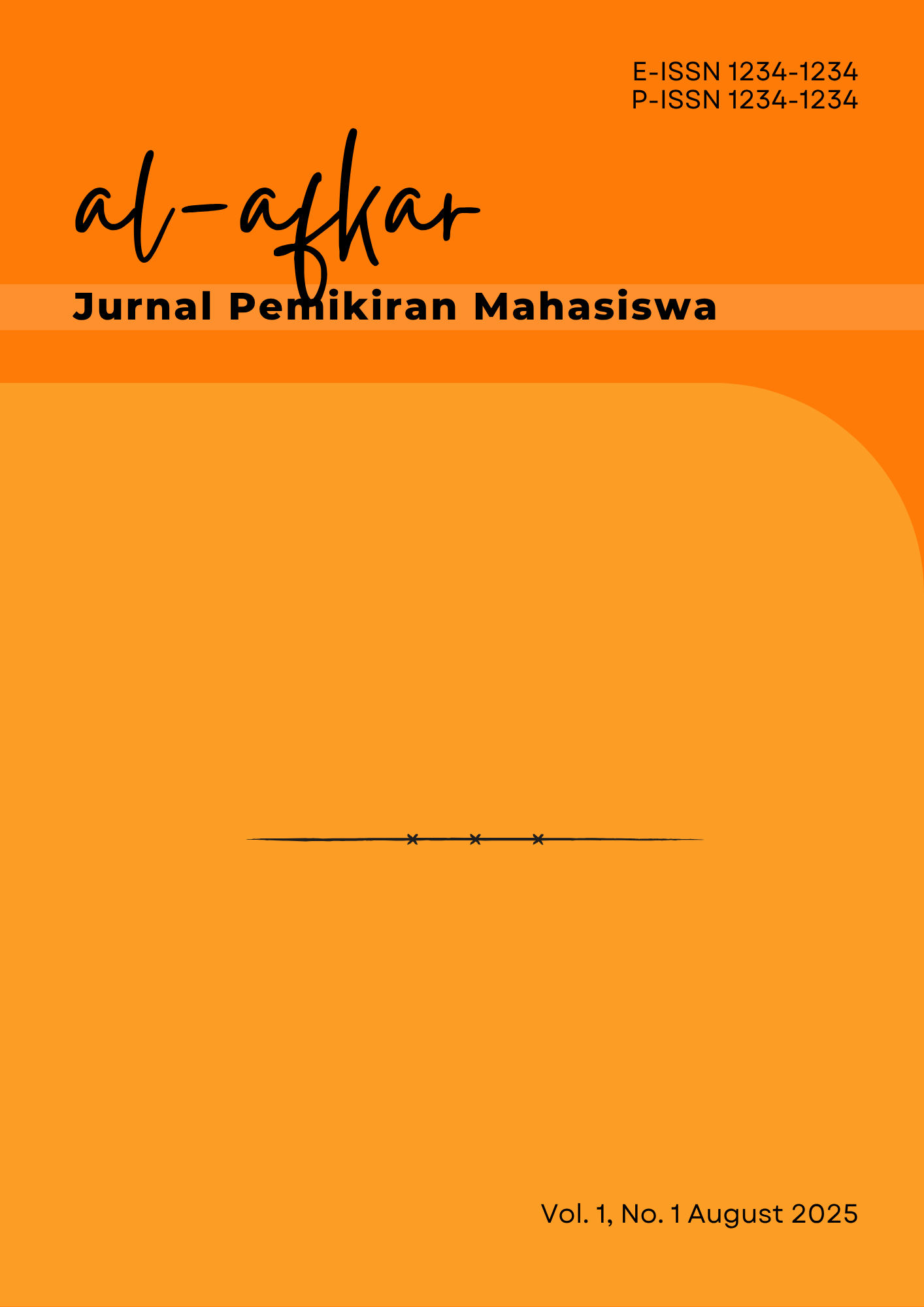Main Article Content
Abstract
This article examines the historiography of the interpretation of Indonesian ulama entitled Malja At Thalibin by KH Ahmad Sanusi. He is a figure who has a unique way of thinking. Regarding religious activities, he has a different opinion on a number of issues, especially when viewed within the dominant framework of modernist and conservative philosophy. KH Ahmad Sanusi's participation in Furu'iyyah discussions with both traditional and modern groups is evidence of his intellectual influence in religious matters. The character of KH Ahmad Sanusi's religious ideology which does not fully support traditionalists and does not fully accept modernist perspectives, especially its emphasis on preaching and education, is the subject of discussion in this journal. This research was conducted using qualitative methods with a literature study approach. The data was taken from the main source, namely the interpretation of Malja at Thalibin, and other supporting sources were taken from various reading materials, namely books and scientific journals. This research shows that the perspective and socio-religious context of a mufassir have a major influence on the understanding of the Qur'an, allowing for a variety of interpretations. As a result, reading religious debates cannot be separated from in-depth consideration of the goals and ideologies of the mufassir.
Keywords
Article Details
References
- Abbas, S. (2013). “Bank dan Riba” dalam 40 Masalah Keagamaan (Vol. 2). Perpustakaan Tarbiyah Baru.
- Abdullah, T. (1997). Refleksi Sejarah Indonesia. LP3ES.
- Agus Pujiarta Firman Sistiawan, W. N. A. N. P. (2023). Metode Pendidikan Dalam Al-Qur’an (Studi Tafsir Ayat-Ayat Tarbawi). N.D., 84–98. https://doi.org/10.52496/bayaniV.3I.2pp84-98
- Basri, H. H. (2000). Kajian Tafsir Malja’ at-Thalibin dan Tamsyiyyat al-Muslimin & Warisan Intelektual Islam Indonesia Kiai Haji Ahmad Sanusi.
- Chambert-Loir, H., & Guillot, C. (n.d.). Ziarah & Wali di Dunia Islam (J. Couteau (ed.)). Bekerja dengan Forum Jakarta-Paris dan Ecole Française d’Extreme-Orient.
- Darmawan, D. (2009). Ortodoksi Tafsir: Tanggapan Ulama Terhadap Tafsir Tamsjijjatoel-Moeslimien oleh K.H. Ahmad Sanusi. Sekolah Pascasarjana UIN Syarif Hidayatullah.
- Dhofier, Z. (1981). Pesantren Tradisional: Kajian Pandangan Hidup Kyai. LP3ES.
- Eriyanto. (2001). Analisis Wacana, Pengantar Analisis Teks Media. LkiS.
- Fairclough, N. (1995). Studi Kritis Bahasa. Longman.
- Falah, M. (2009). Masyarakat Sejarawan Indonesia di Jawa Barat, Sejarah Perjuangan K.H. Ahmad Sanusi, dan Pemerintah Kota Sukabumi bekerja sama dalam beberapa proyek.
- Raihani Salma A Wahyudi, D. Z. A. F. M. M. N. E. S. (2023). Makna Qoryah Dalam Al Quran Dan Kaitannya Dengan Lingkungan Pendidikan Islam (Analisis Semantik Karya Toshihiku Izutsu). N.D., 2(1), 30–44. http://dx.doi.org/10.35931/am.v2i1.2943
- Rohmana, J. A. (2015). Al-Qur’an dan Al-Isti’mr: Radd Al-Shaykh Al-ajj Ahmad Sanusi (1888--1951), juga dikenal sebagai Al-Isti’mr Min Khil’l Tafsr Mal’ja’ Al-Libn. Kajian Islam, No. 2(2). https://doi.org/10.15408/sdi.v22i2.1921
- Rosidi, A. (2006). Islam di Sunda: Sebuah Survei Investigasi Tentang Karya Haji Ahmad Sanusi. Prosiding Konferensi Internasional Bahasa Sunda, 1.
- van Bruinessen, M. (1990). Bijdragen tot de Taal-, Land-en Volkenkunde. 146(2/3).
- Wahyudi Wahyu Nada, C. S. D. W. L. P. (2023). Analisis Pemikiran As-Shabuni Tentang Poligami Dalam Kitab Shafwatut Tafasir. N.D., 3.
References
Abbas, S. (2013). “Bank dan Riba” dalam 40 Masalah Keagamaan (Vol. 2). Perpustakaan Tarbiyah Baru.
Abdullah, T. (1997). Refleksi Sejarah Indonesia. LP3ES.
Agus Pujiarta Firman Sistiawan, W. N. A. N. P. (2023). Metode Pendidikan Dalam Al-Qur’an (Studi Tafsir Ayat-Ayat Tarbawi). N.D., 84–98. https://doi.org/10.52496/bayaniV.3I.2pp84-98
Basri, H. H. (2000). Kajian Tafsir Malja’ at-Thalibin dan Tamsyiyyat al-Muslimin & Warisan Intelektual Islam Indonesia Kiai Haji Ahmad Sanusi.
Chambert-Loir, H., & Guillot, C. (n.d.). Ziarah & Wali di Dunia Islam (J. Couteau (ed.)). Bekerja dengan Forum Jakarta-Paris dan Ecole Française d’Extreme-Orient.
Darmawan, D. (2009). Ortodoksi Tafsir: Tanggapan Ulama Terhadap Tafsir Tamsjijjatoel-Moeslimien oleh K.H. Ahmad Sanusi. Sekolah Pascasarjana UIN Syarif Hidayatullah.
Dhofier, Z. (1981). Pesantren Tradisional: Kajian Pandangan Hidup Kyai. LP3ES.
Eriyanto. (2001). Analisis Wacana, Pengantar Analisis Teks Media. LkiS.
Fairclough, N. (1995). Studi Kritis Bahasa. Longman.
Falah, M. (2009). Masyarakat Sejarawan Indonesia di Jawa Barat, Sejarah Perjuangan K.H. Ahmad Sanusi, dan Pemerintah Kota Sukabumi bekerja sama dalam beberapa proyek.
Raihani Salma A Wahyudi, D. Z. A. F. M. M. N. E. S. (2023). Makna Qoryah Dalam Al Quran Dan Kaitannya Dengan Lingkungan Pendidikan Islam (Analisis Semantik Karya Toshihiku Izutsu). N.D., 2(1), 30–44. http://dx.doi.org/10.35931/am.v2i1.2943
Rohmana, J. A. (2015). Al-Qur’an dan Al-Isti’mr: Radd Al-Shaykh Al-ajj Ahmad Sanusi (1888--1951), juga dikenal sebagai Al-Isti’mr Min Khil’l Tafsr Mal’ja’ Al-Libn. Kajian Islam, No. 2(2). https://doi.org/10.15408/sdi.v22i2.1921
Rosidi, A. (2006). Islam di Sunda: Sebuah Survei Investigasi Tentang Karya Haji Ahmad Sanusi. Prosiding Konferensi Internasional Bahasa Sunda, 1.
van Bruinessen, M. (1990). Bijdragen tot de Taal-, Land-en Volkenkunde. 146(2/3).
Wahyudi Wahyu Nada, C. S. D. W. L. P. (2023). Analisis Pemikiran As-Shabuni Tentang Poligami Dalam Kitab Shafwatut Tafasir. N.D., 3.

